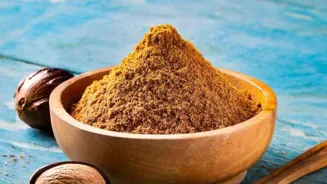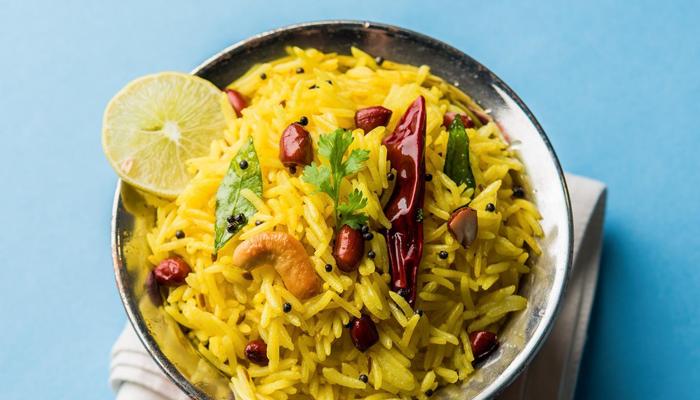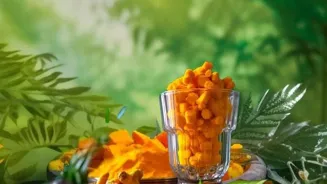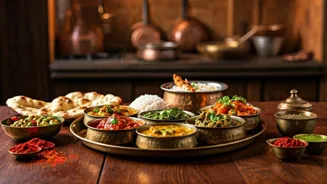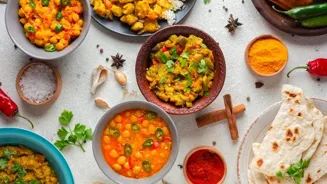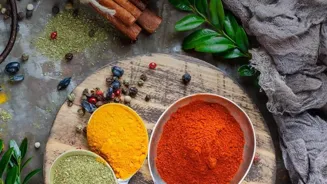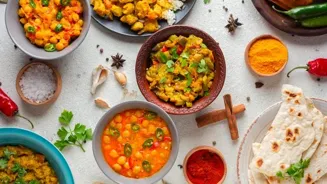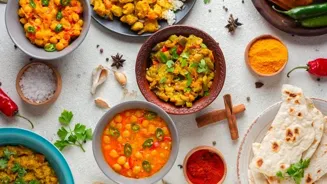Discover the essence of Indian cooking with five must-master dishes. Start your culinary journey now!
India, a land of vibrant colours, diverse cultures, and a rich history, is also a treasure trove of culinary
delights. From the snow-capped Himalayas to the sun-kissed beaches of the south, each region boasts unique flavours and cooking styles.
While the sheer variety can be overwhelming, there are a few classic dishes that every Indian should know how to prepare. These dishes are not only staples in most households but also represent the essence of Indian cooking.
Mastering them is like unlocking a gateway to a world of delightful tastes and culinary traditions. So, grab your apron and let's embark on this flavourful journey!
Dal Tadka: versatile, aromatic lentil soup, a staple in Indian homes, customizable and comforting
The first dish on our list is the humble yet universally loved Dal Tadka. This lentil soup, tempered with aromatic spices, is a comfort food that transcends geographical boundaries. It is a staple in almost every Indian home and is incredibly versatile.
You can use different types of lentils, like toor dal, masoor dal or chana dal, to create variations in taste and texture. The 'tadka', or tempering, is the heart of this dish. It involves heating oil or ghee and then adding spices like cumin seeds, mustard seeds, dry red chillies, and asafoetida.
The sizzling spices release their aroma, infusing the dal with a burst of flavour. Every cook has their own secret to making the perfect dal tadka, some adding a pinch of sugar, a squeeze of lemon, or a dollop of butter for extra richness.
It is typically eaten with rice or roti and is a complete and nutritious meal. Learning to make a good dal tadka is like learning a fundamental skill in Indian cooking. It is a simple yet satisfying dish that you can easily customize to your liking.
Knowing how to prepare this dish will surely impress your family and friends. Moreover, it is a quick and easy option for those busy weekdays when you don't have much time to cook. Dal Tadka – simple, satisfying, and undeniably iconic is a cornerstone of Indian cuisine.
Aloo Gobi: classic Indian dish with potatoes, cauliflower, spices, and versatility
Next up is Aloo Gobi, a simple yet flavourful dry vegetable dish that is a favourite in many Indian households. This classic combination of potatoes (aloo) and cauliflower (gobi) is cooked with a blend of spices to create a delightful and satisfying meal.
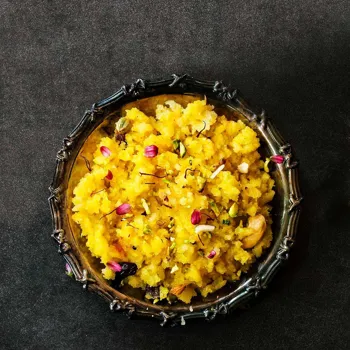
The key to a perfect Aloo Gobi lies in ensuring that the vegetables are cooked to perfection – tender but not mushy. The spice blend typically includes turmeric powder, cumin powder, coriander powder, and garam masala, but you can adjust it according to your taste preferences.
Some variations also include ginger, garlic, and green chillies for added flavour and heat. Aloo Gobi can be enjoyed as a side dish with roti or paratha, or as a main course served with rice or naan. It is a versatile dish that can be customized with other vegetables like peas or carrots.
Aloo Gobi boasts comforting and familiar flavours. Its simplicity makes it an ideal choice for a quick and satisfying weeknight meal. Mastering this dish is a testament to your understanding of the art of balancing spices and textures in Indian cooking.
Moving on, we have a true Indian classic
Vegetable Biryani. This aromatic rice dish is a celebration of flavours, colours, and textures. Unlike some other biryani variations, vegetable biryani is completely vegetarian.
It is made by layering long-grain rice with a medley of vegetables like carrots, peas, beans, potatoes, and cauliflower, all cooked in a rich and fragrant blend of spices.
The spices typically include saffron, cardamom, cloves, cinnamon, and bay leaves, which impart a distinctive flavour to the rice. Vegetable Biryani is often garnished with fried onions, fresh coriander leaves, and mint leaves for added flavour and visual appeal.
A good vegetable biryani is all about achieving the perfect balance of flavours and textures. The rice should be fluffy and separate, the vegetables should be tender, and the spices should be aromatic but not overpowering.
It's a dish that is often served at special occasions and celebrations, but it can also be enjoyed as a hearty and satisfying meal any time of the week. Vegetable Biryani is a testament to the versatility of Indian cooking.
It showcases how simple ingredients can be transformed into a culinary masterpiece with the right techniques and spices.
A spicy and tangy chickpea curry staple in North Indian cuisine
Our fourth culinary gem is Chana Masala, a spicy and tangy chickpea curry that is a staple in North Indian cuisine. This flavorful dish is made with white chickpeas (chana), cooked in a tomato-based gravy with a blend of aromatic spices.
The spices typically include cumin powder, coriander powder, turmeric powder, red chilli powder, and garam masala. A hint of dried mango powder (amchur) adds a tangy twist to the dish. Chana Masala is a hearty and satisfying dish that can be enjoyed with roti, naan, or rice.
It is a popular street food in India and is often served with bhatura, a deep-fried bread. It is also a great source of protein and fibre, making it a healthy and nutritious meal option. The secret to a good Chana Masala lies in achieving the right balance of spices and tanginess.
The chickpeas should be tender and well-cooked, and the gravy should be thick and flavorful and well absorbed. Mastering Chana Masala means adding versatility to your cooking repertoire. It is a flavorful and satisfying dish that is perfect for any occasion.
Roti, essential Indian flatbread, staple in cuisine, made with atta, skill to perfect
Finally, no list of essential Indian dishes would be complete without mentioning Roti. This unleavened flatbread is a staple in Indian cuisine and is eaten with almost every meal. Roti is made from whole wheat flour (atta), water, and a pinch of salt.
The dough is rolled out into thin circles and then cooked on a hot griddle or tawa until it puffs up. A perfectly cooked roti is soft, pliable, and slightly charred. Making roti may seem simple, but it requires practice and patience to master the technique.
The dough needs to be kneaded well to ensure that the roti is soft. The roti should be cooked evenly on both sides, and it should puff up on the tawa, indicating that it is cooked properly. Roti is often served with dal, vegetables, or curries.
It is a versatile and essential part of Indian cuisine. Mastering the art of making a good roti is a fundamental skill for any Indian cook. It is a simple yet satisfying bread that is a perfect accompaniment to any Indian meal.
Making a soft, perfect roti is something many Indian home makers strive for, perfecting it with practice.
